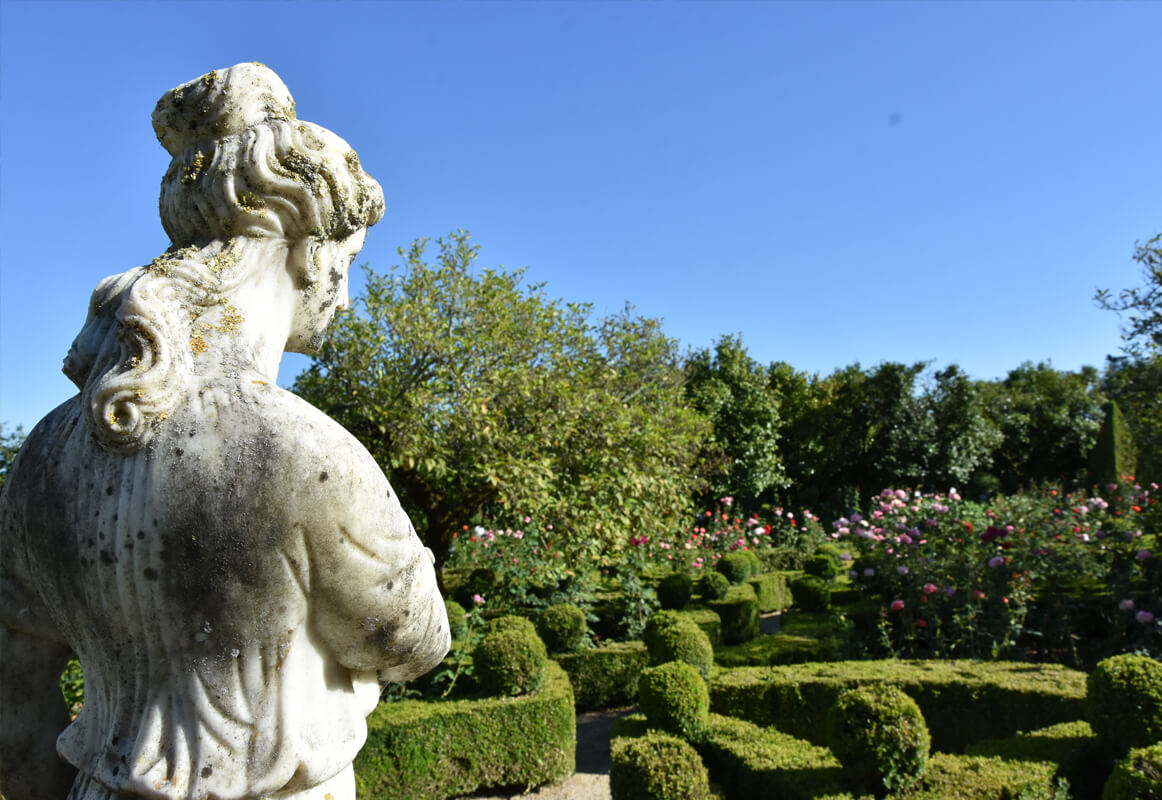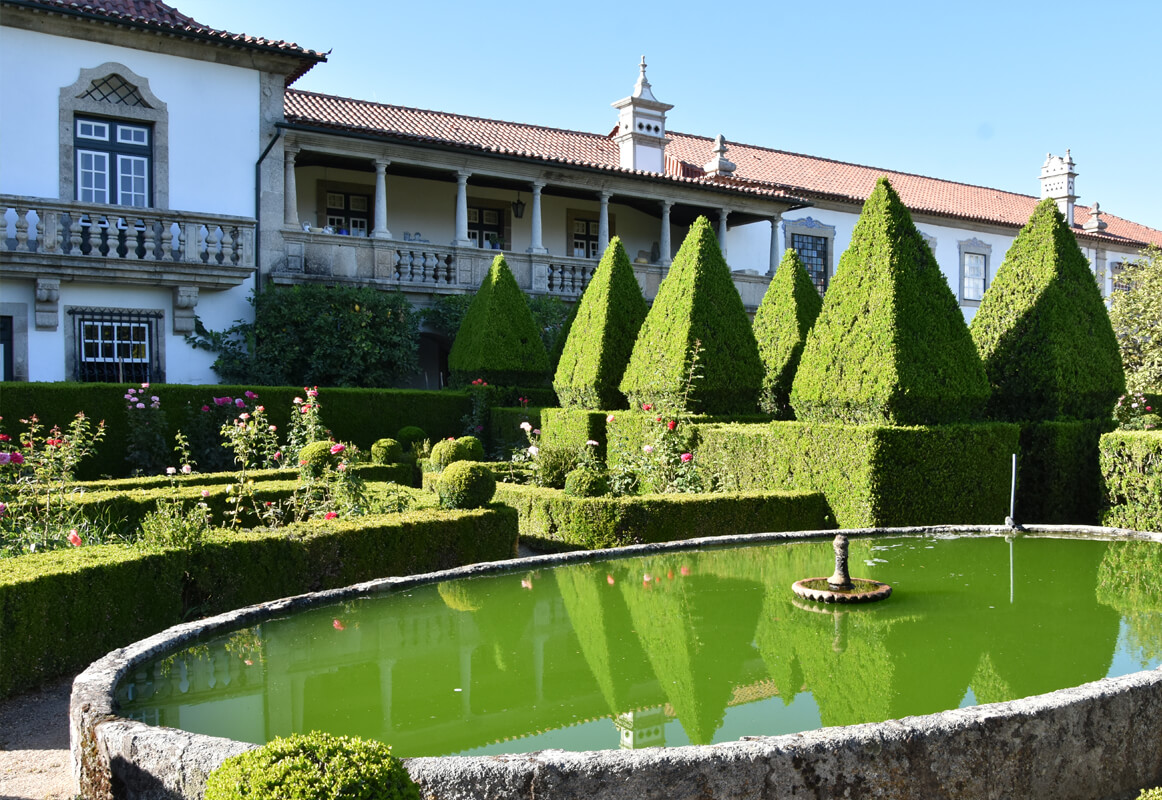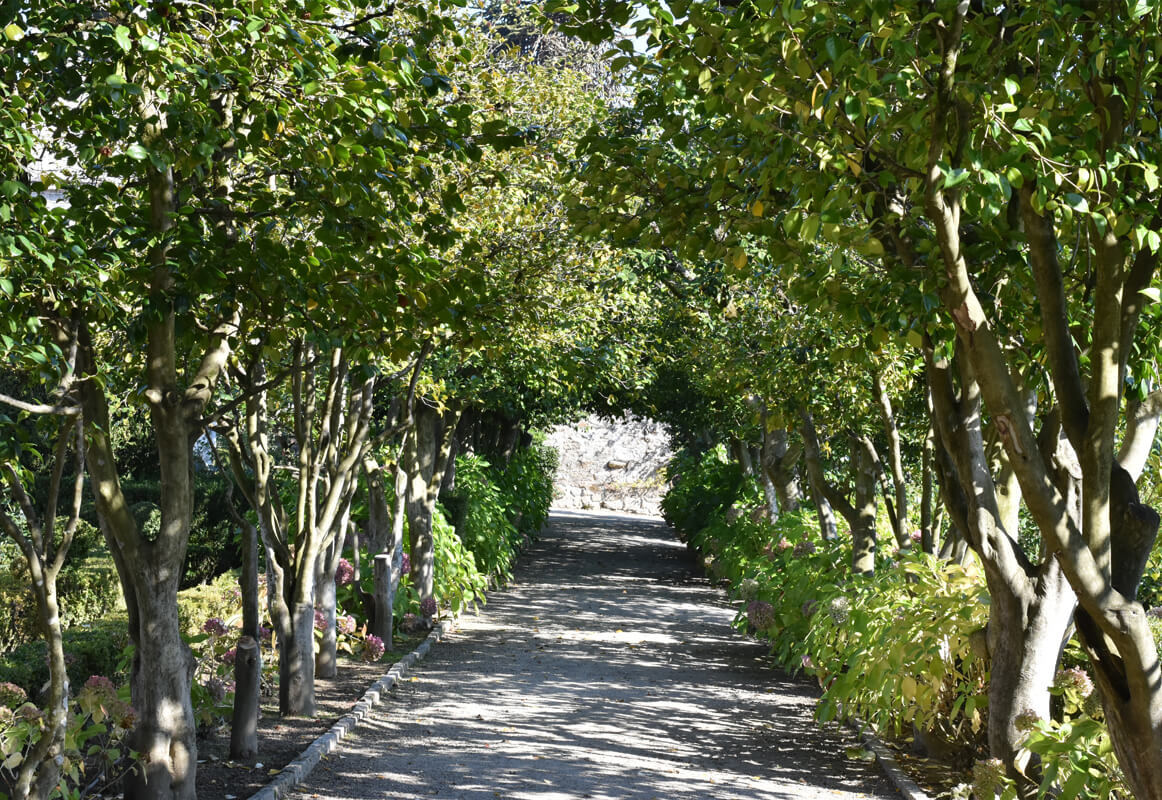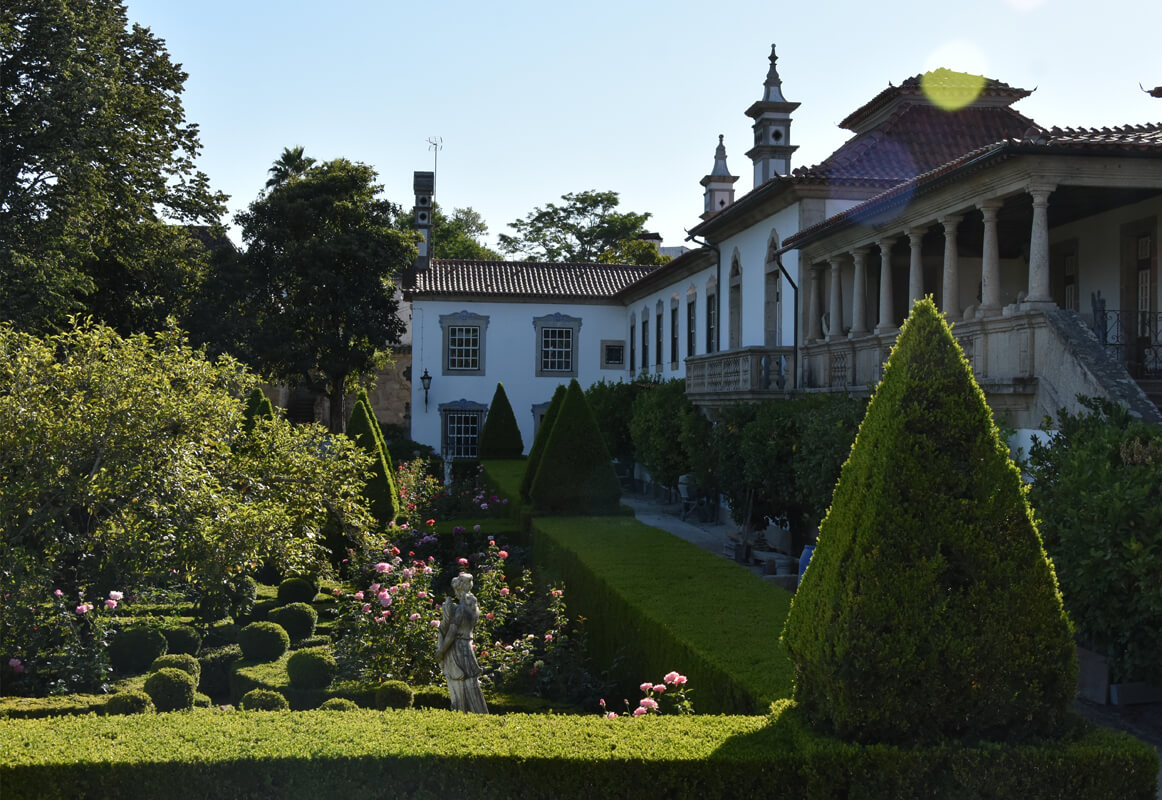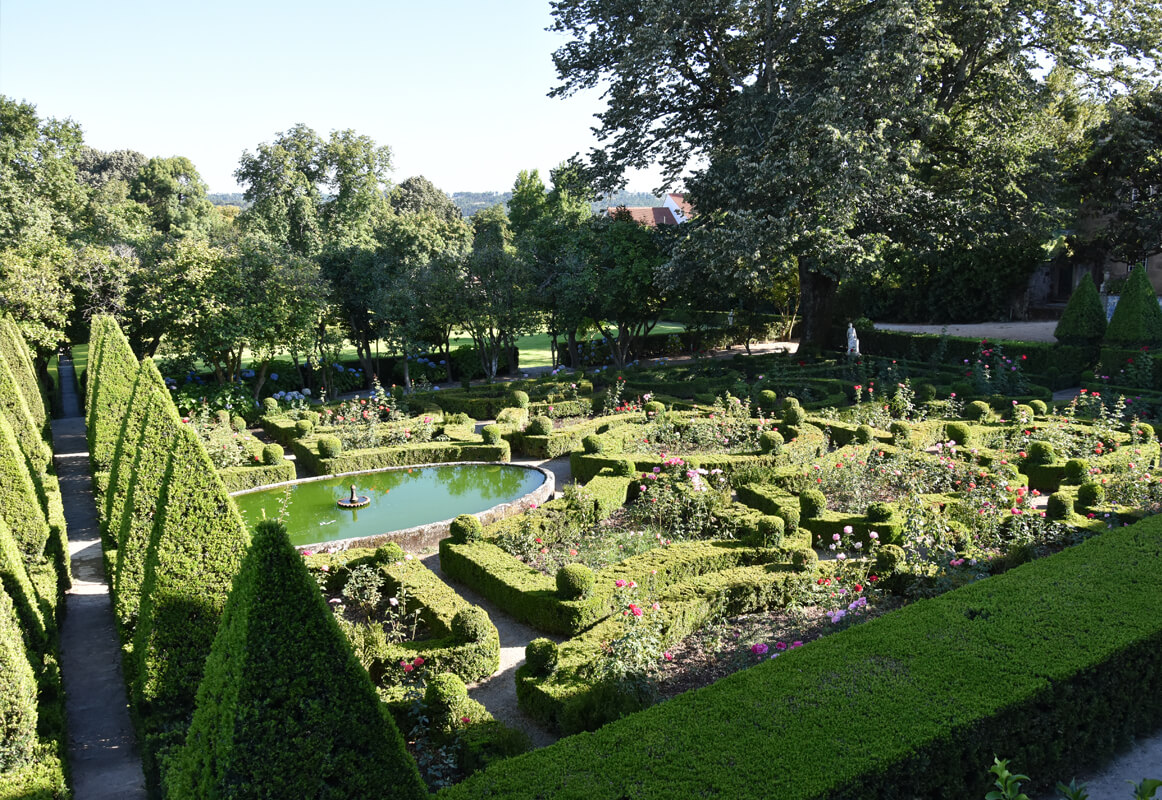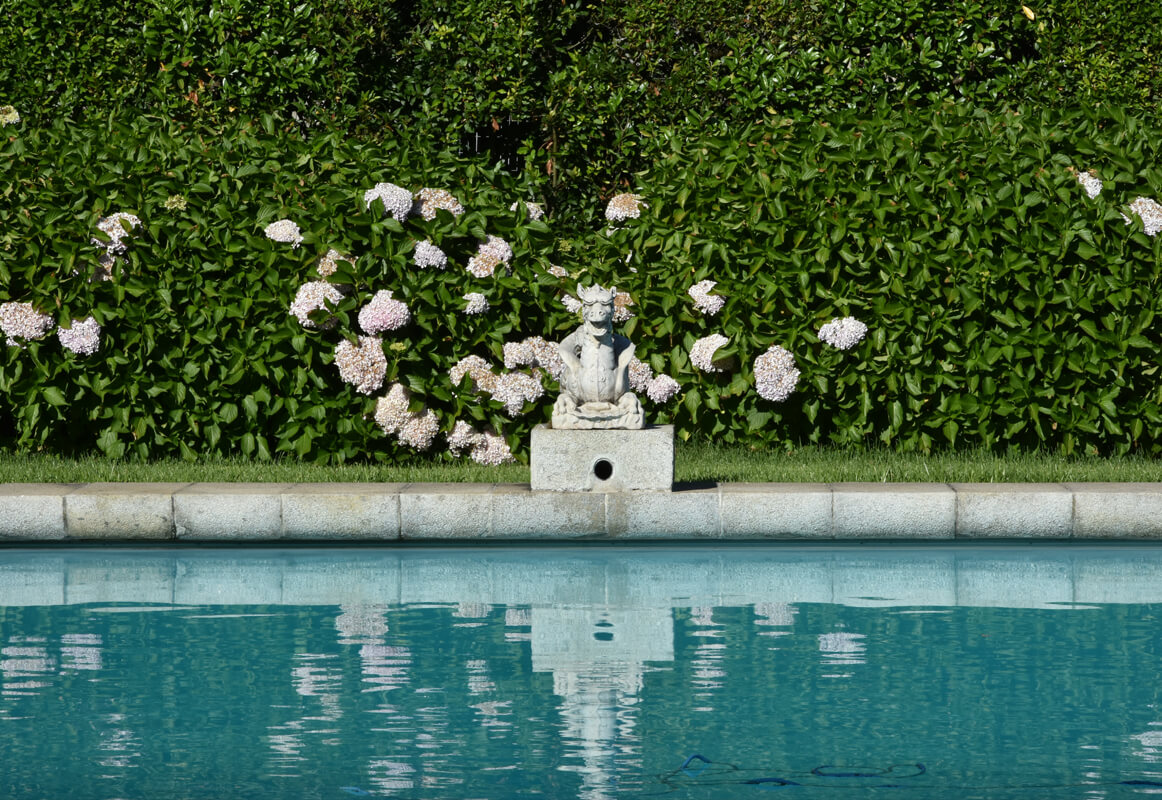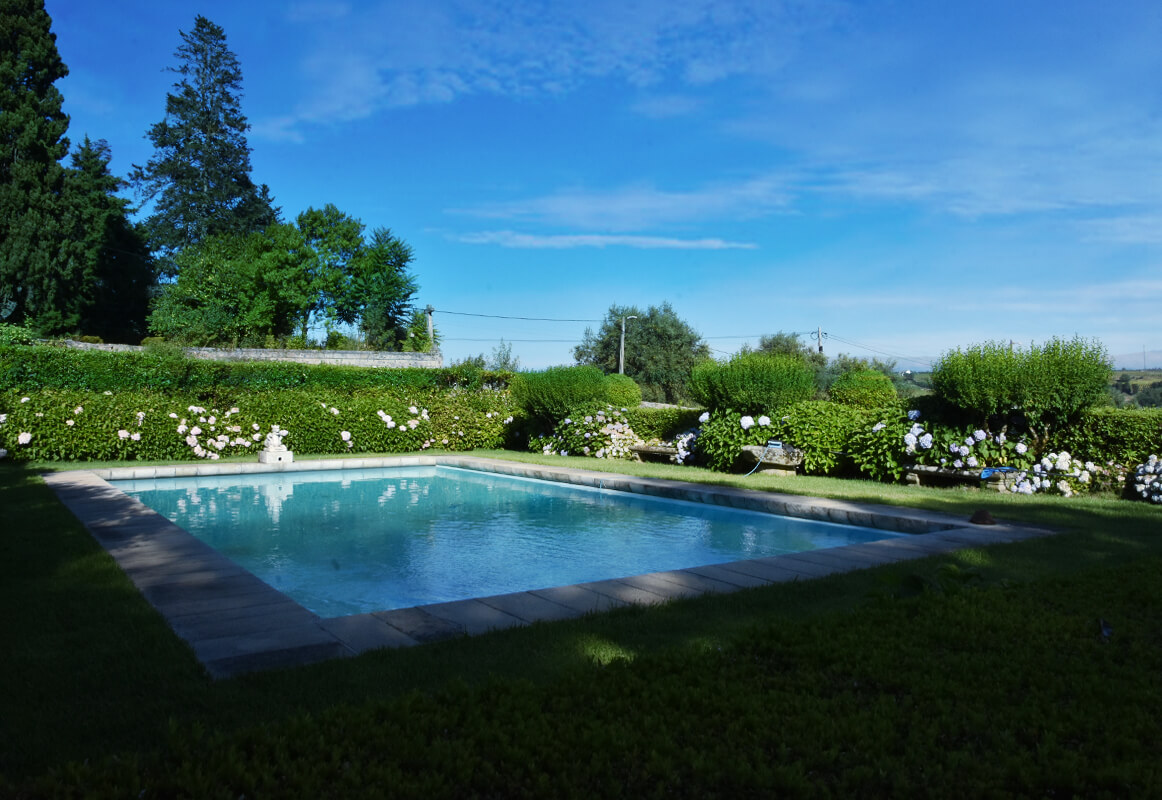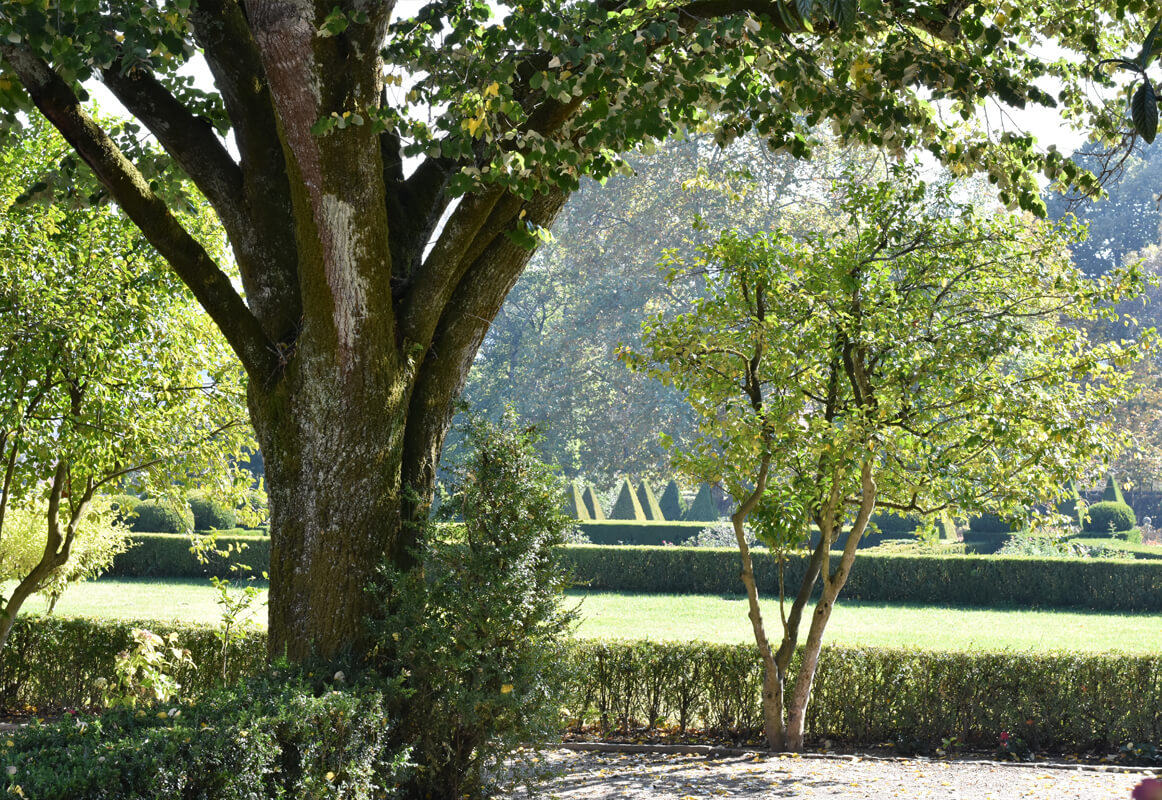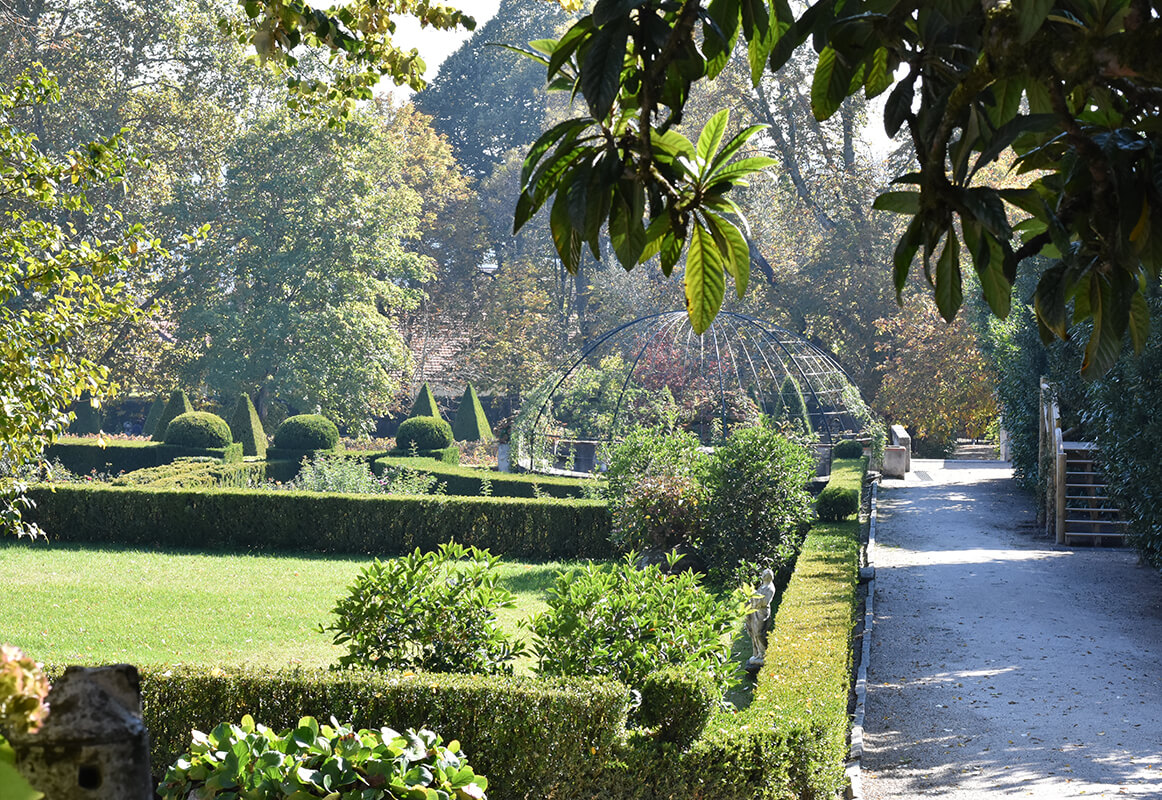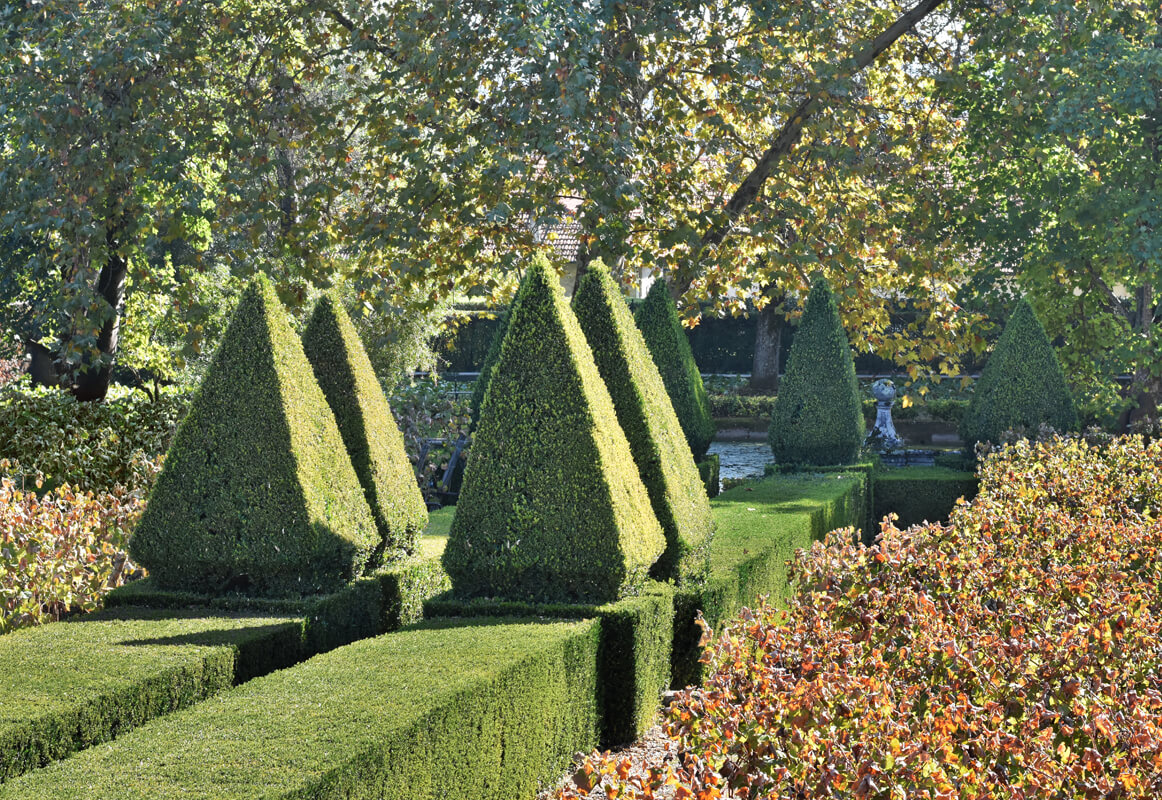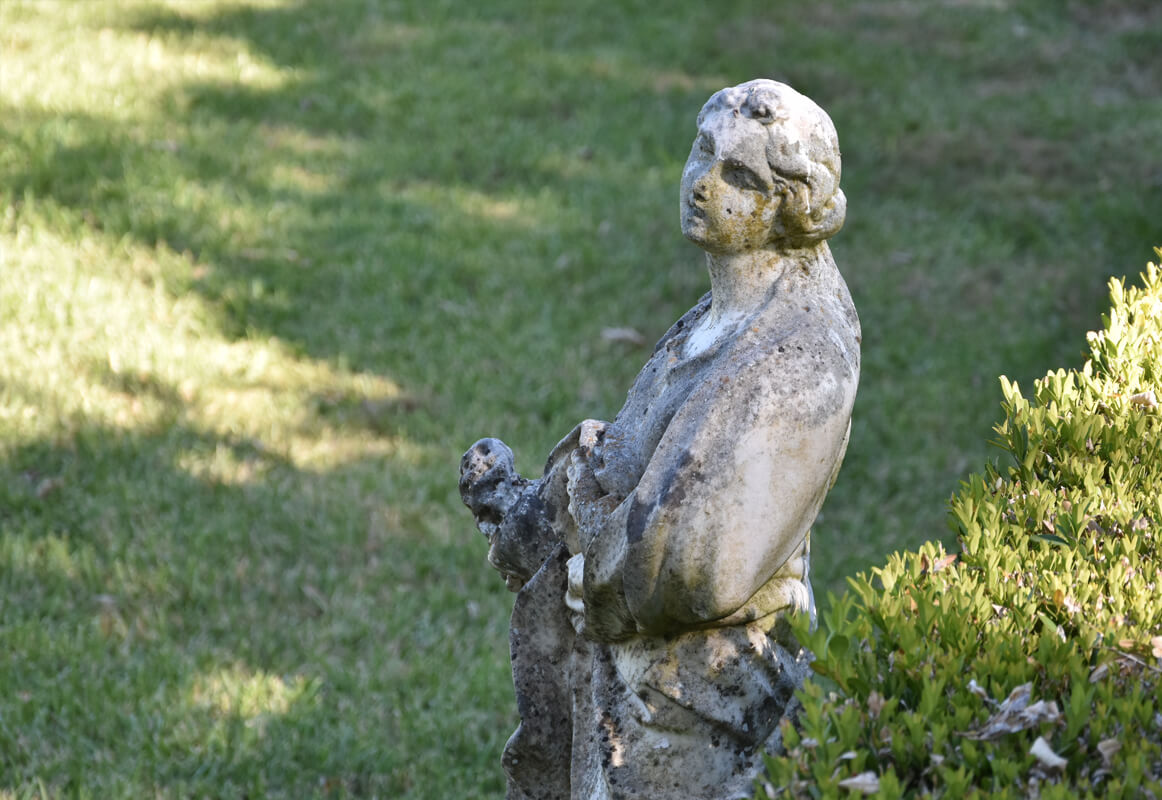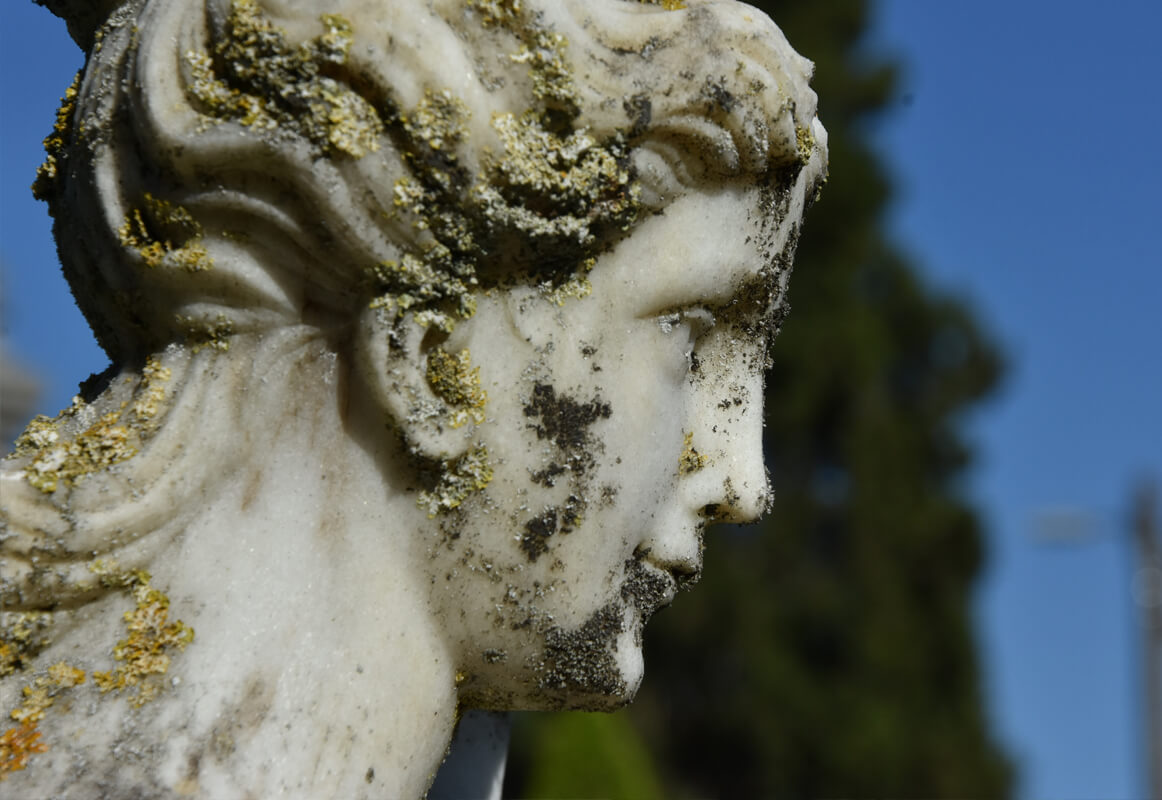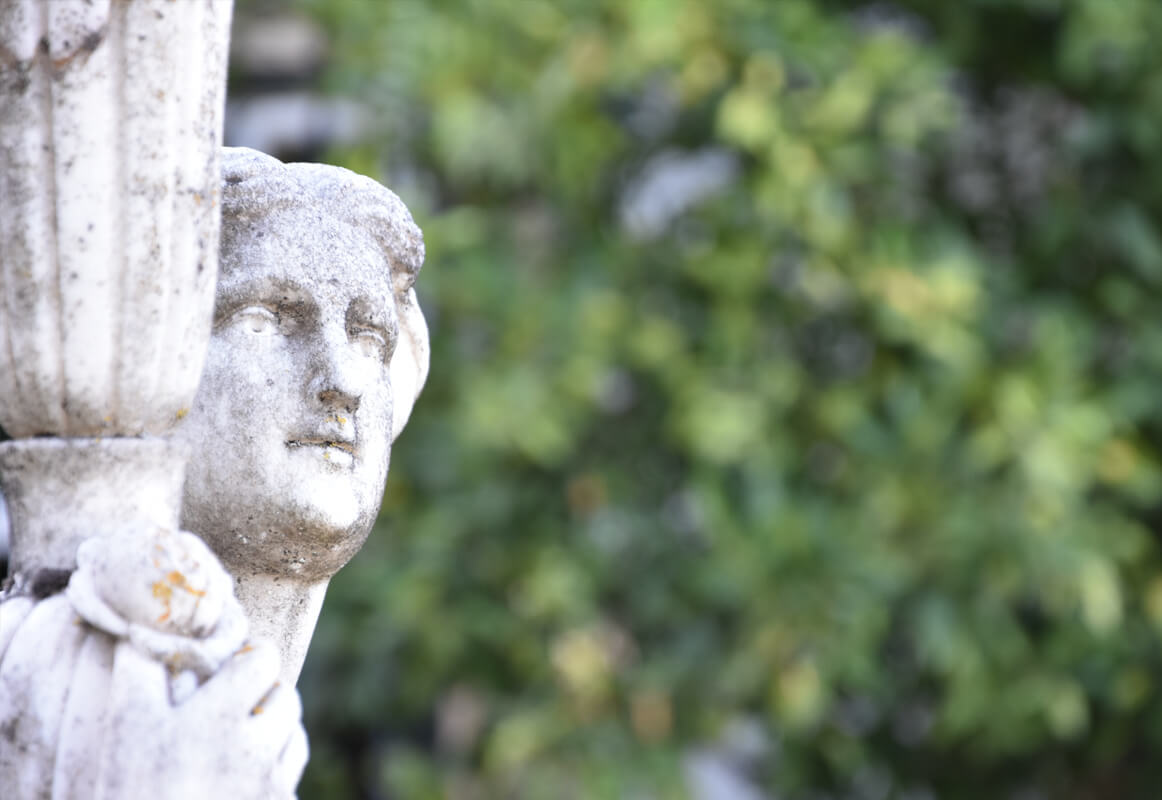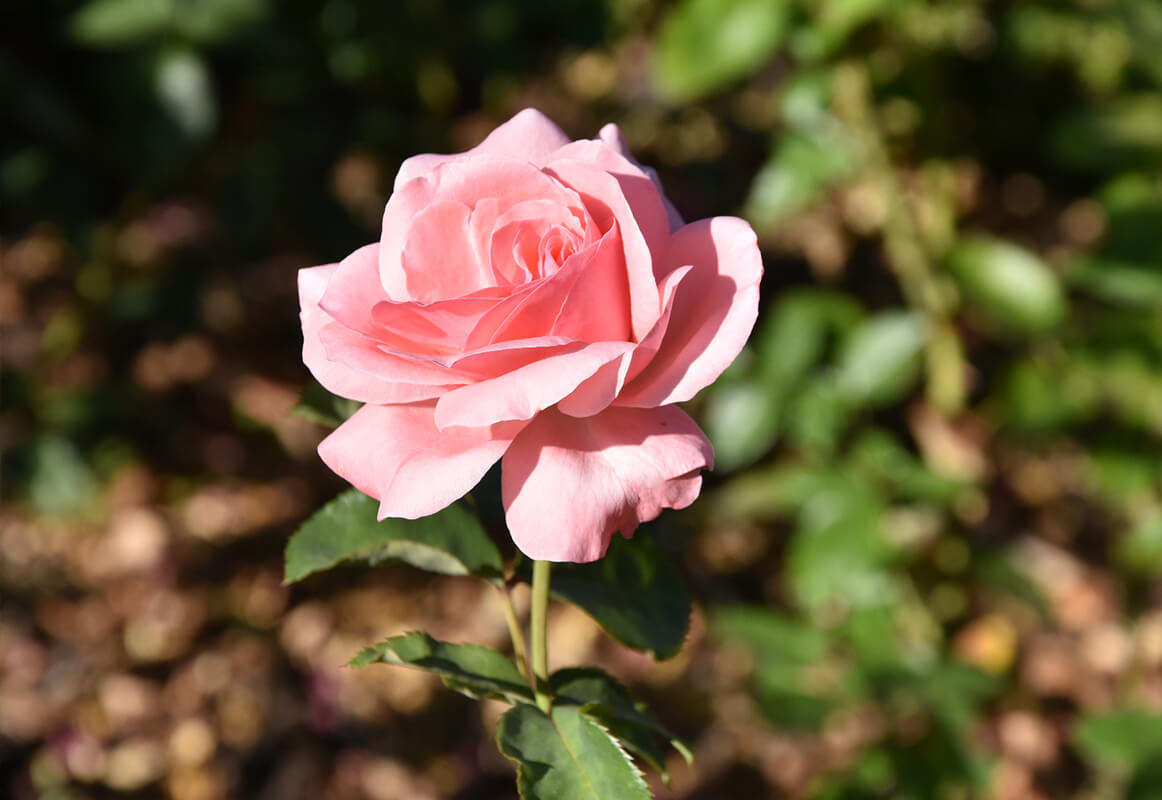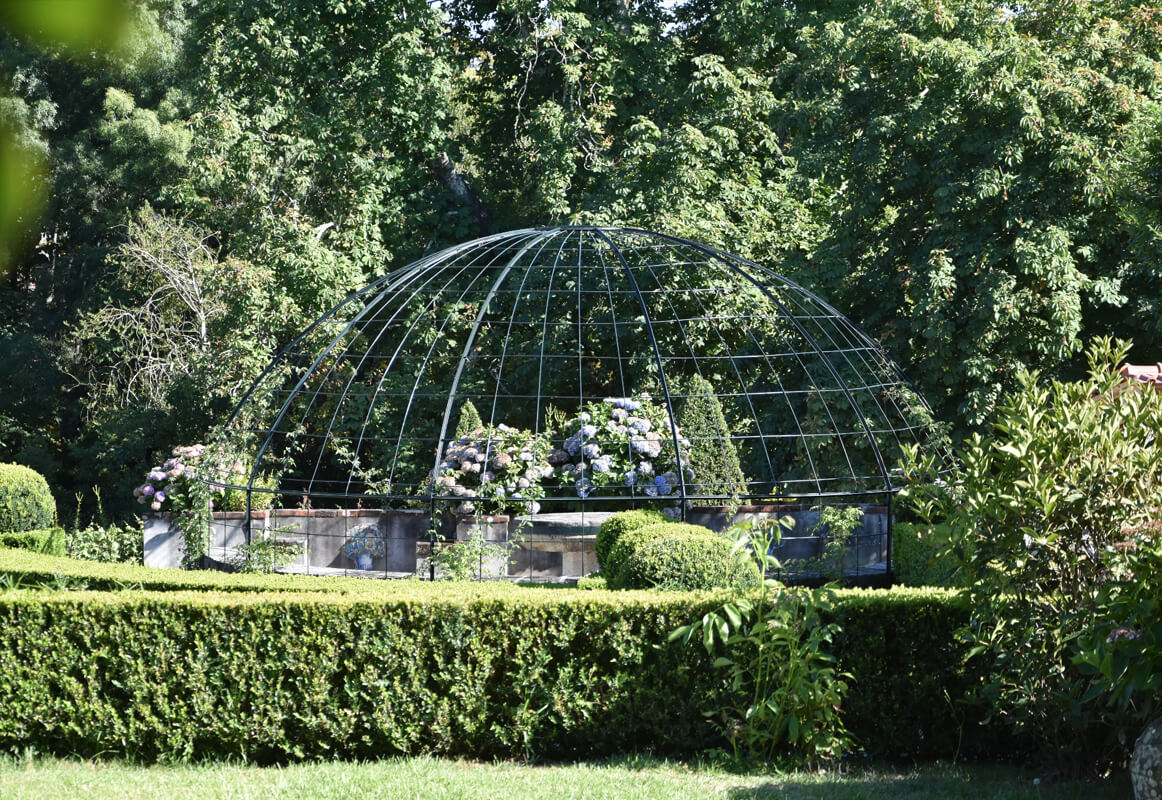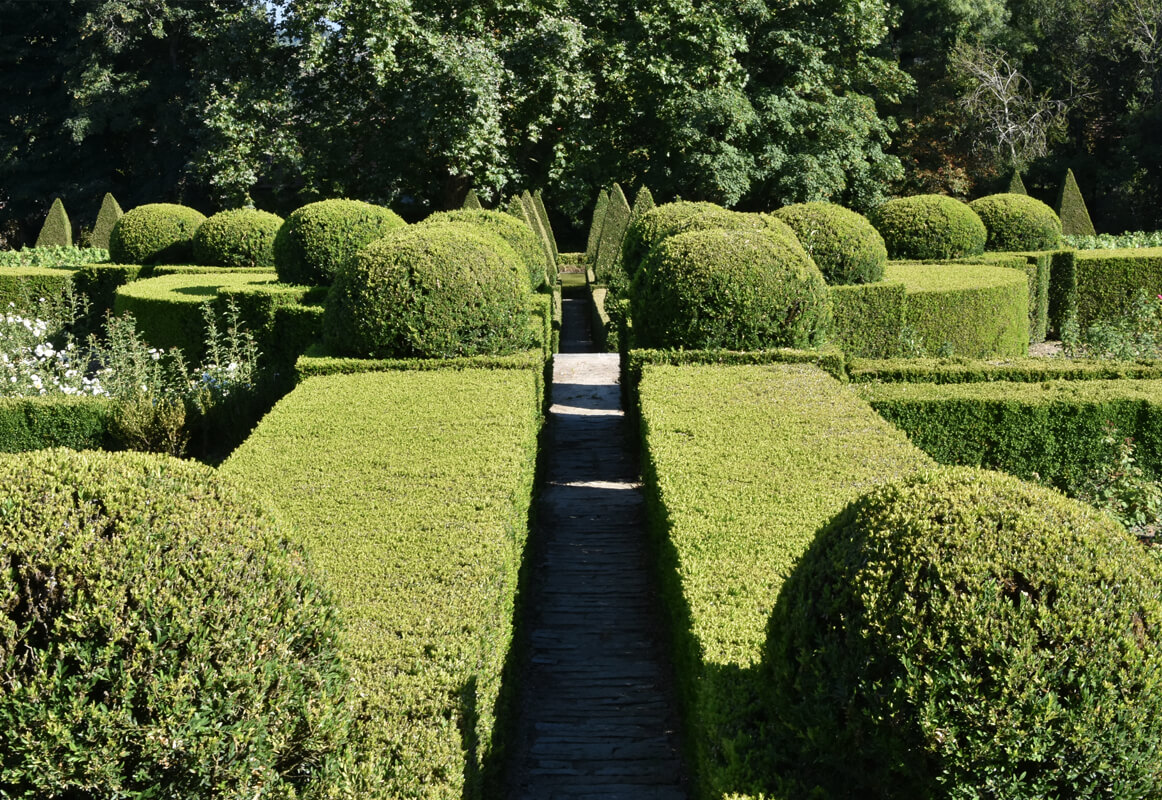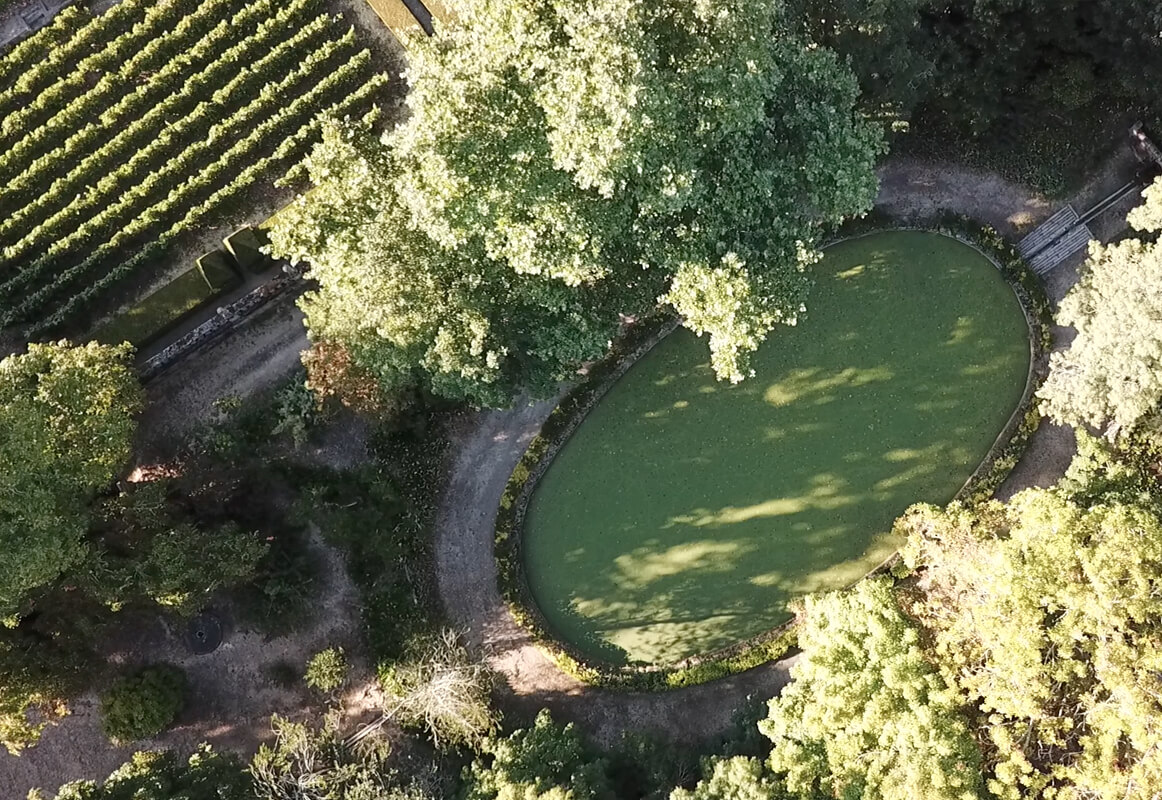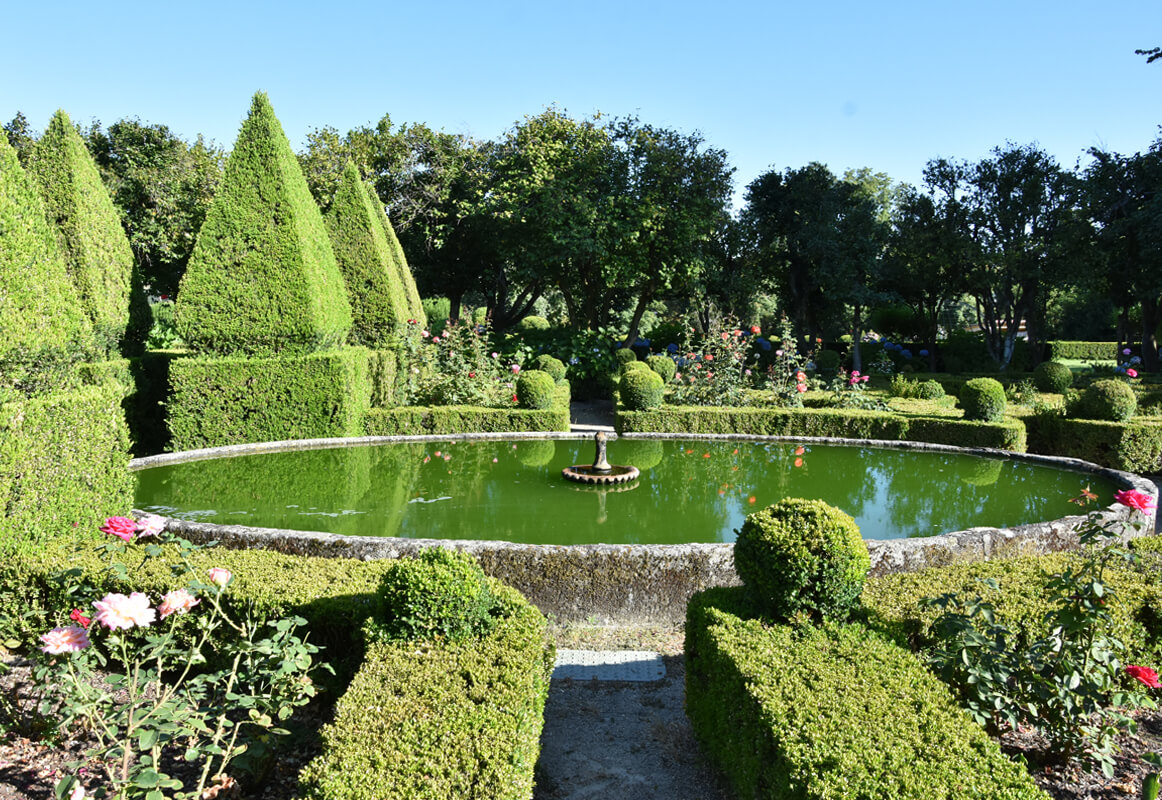Garden
As the son of a rich Genovese merchant, Francisco Lucas de Melo probably received strong Italian influences during his childhood and youth. It is only natural, thus, that towards the end of the 17th century, after marring the heiress to the bond of Santar, Maria Luisa Pais do Amaral, this property – much like what happened in other places – also became a Quinta de Recreio, a leisure estate whose gardens suffered heavy Italian influence.
In spite of the renovations made throughout the centuries, the gardens of the Casa de Santar e Magalhães still preserve much of their initial spirit and deserve, to this day, careful attention.
Almost rectangular in shape, the garden – designed as a view to be enjoyed from the house’s balcony – slopes gently down to the East, in a sequence of five plateaus, ending in a wide lake. Streets lined with box shrubs, carved in diverse geometrical shapes, surround the plateaus.
The first plateau consists of a parterre of boxes and rose trees ending in an avenue of camelias, parallel to the house, edged with hortensias. It is onto this first level that the main gate to the estate opens, and where a granite belvedere makes up an ideal observation point over the vineyards which lie further down.
On the opposite side, near the Old Kitchen, we can see an elegant water fountain coated in tiles painted by the Spanish artist Gabriel del Barco, a very large linden tree, and a group of loquat trees. The first and second parterre are decorated with statues in the Italian fashion.
On the third and fourth thresholds, always edged by boxes, we find various compositions, some rose trees, a small vegetable garden, and a vineyard containing the region’s different grapes.
The layout of the four plateaus is governed by an axis perpendicular to the house, dividing the parterres into two, nearly symmetrical spaces, enclosed by a wall with a balustrade. In the middle of this, there is a stairway which leads to a lake surrounded by a grove of Indian chestnuts.
The garden is further edged by an outcrop of the wine cellar, were we can find the Fonte dos Cavalos. An iron gate and a hedge complete the separation of the garden space from the farmyard and the heart of the wine cellar.
Fonte de Cavalos
The end of the 18th century saw the construction of the grand water fountain later known as Fonte dos Cavalos, decorated nowadays with four tile panels depicting horsemen, all of whom bear the face of Pedro Paulo de Melo de Figueiredo Pais do Amaral (1876-1941), 2nd count of Santar. According to family tradition, he took great pride in the role played by Portugal in the Discoveries. For this reason, he especially admired the so-called Viceroy Gardens which the first Marquess of Fronteira, D. João de Mascarenhas, had designed in the 17th century for his leisure estate in Benfica.
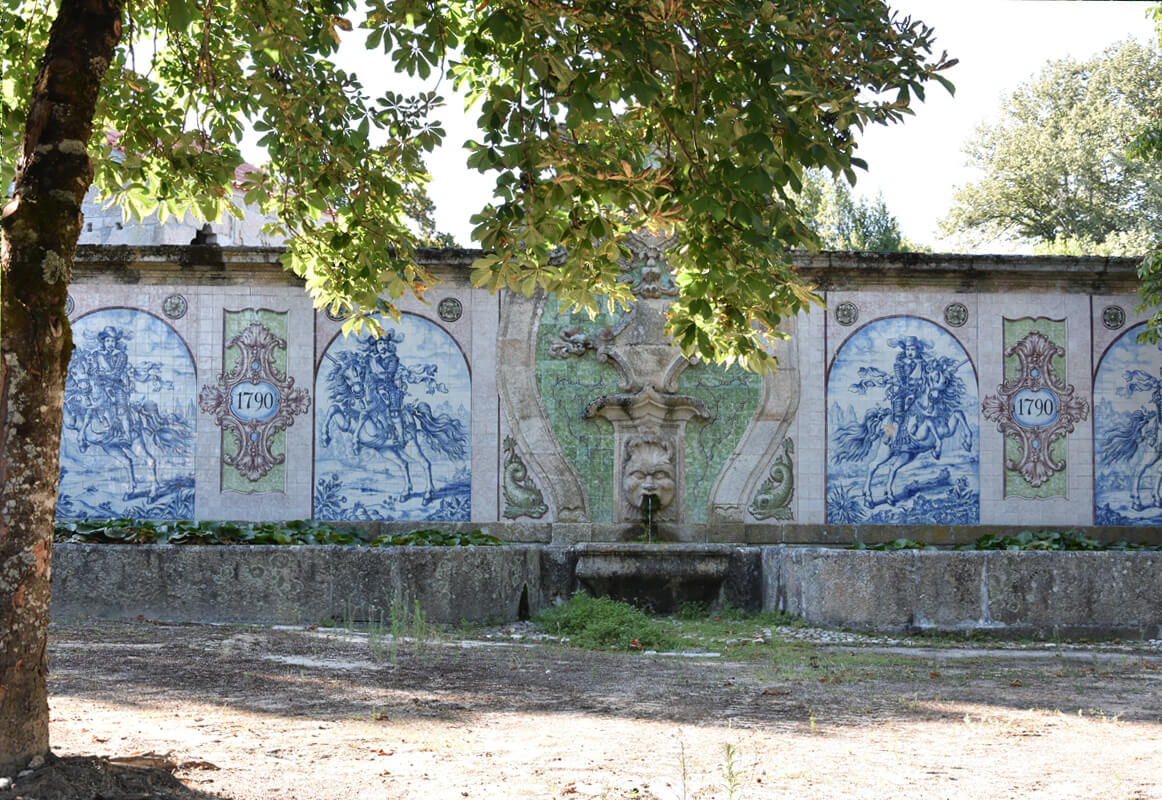
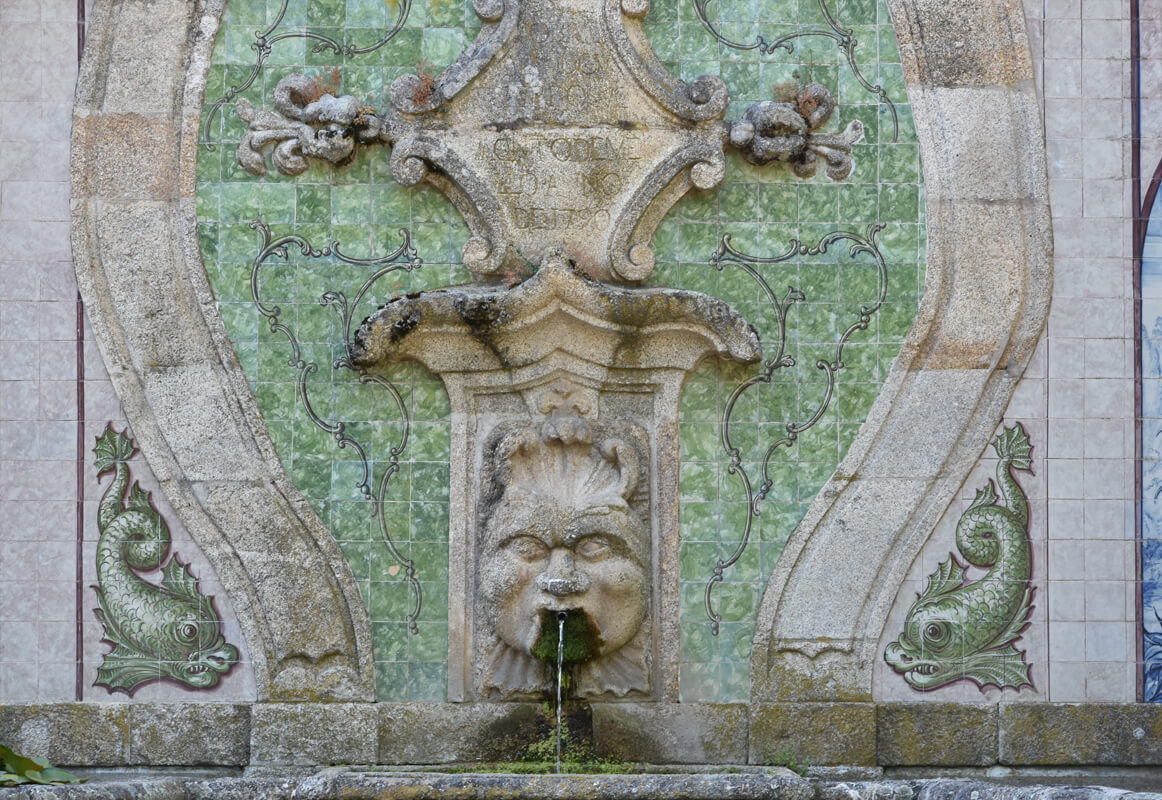
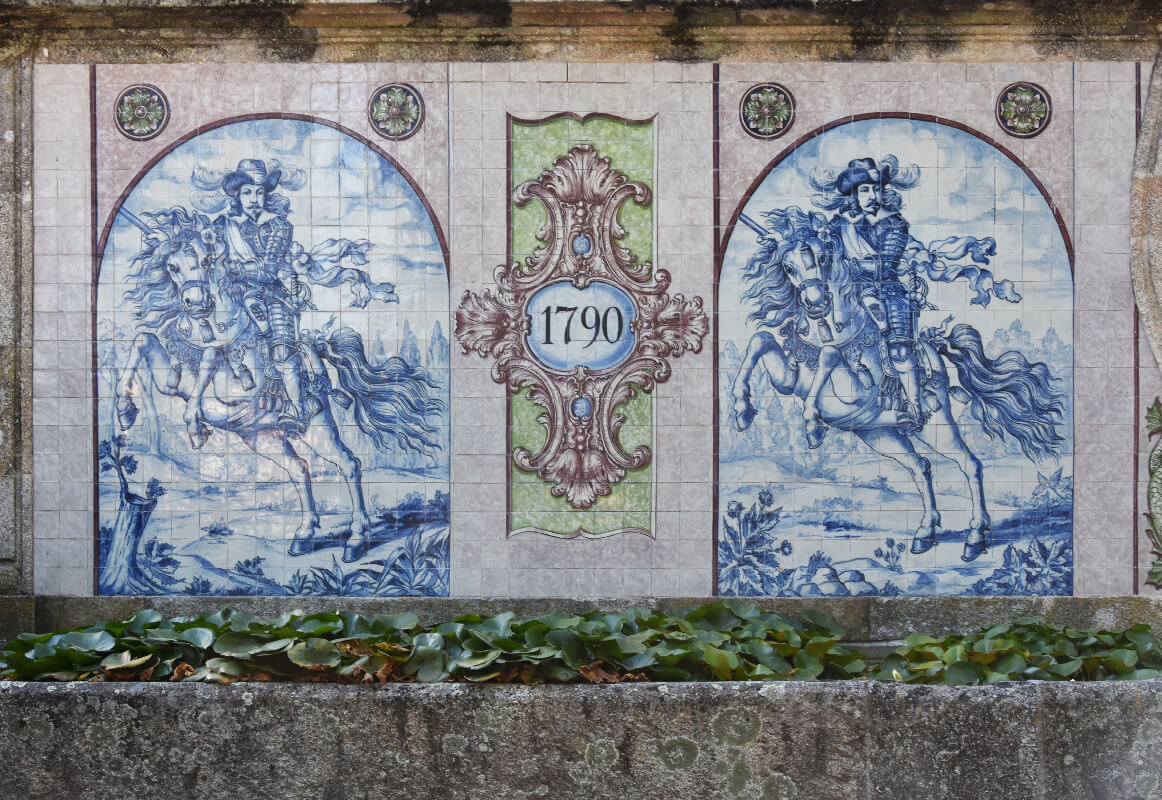
In that garden’s water mirror – a direct allusion to the role played by the nobility in consolidating the monarchy – we can see the busts of Portugal’s kings (from Count Henrique to King Pedro II) supported, as it were, by knights of the Mascarenhas family. Some of these became viceroys and are depicted on several tile panels.
This may be the reason why the 2nd count of Santar commissioned Pereira Cão to make tile panels that were identical to the ones in the gardens of Palácio Fronteira, for the decoration of the Fonte dos Cavalos.
As fate would have it, some years later the two families came to be united by marriage, when his great niece Maria Teresa Lancastre de Melo (1928 -2015), daughter of the 3rd viscount of Taveiro and 3rd countess of Santar, espoused the count of Óbidos, of Palma and of Alva – all these titles coming from the Mascarenhas family.
Pereira Cão (1841-1921)
José Maria Pereira Júnior, who later became known as Pereira Cão, was born in Setúbal on February 22nd, 1841. Under the influence of his cousin, the tile painter Mariano António Brandão, he moved to Lisbon, aged 12, to study at the Instituto Industrial and the Academia de Belas Artes. He then started working with the Italian scenographers Giuseppe Cinatti and Achiles Rambois, with whom he later collaborated for over 20 years. That collaboration included their work in the Palácio da Ajuda, to prepare it for the wedding of King Luís and D. Maria Pia. His activity thus included both scenography and decorative work in palaces, houses of nobility, chapels, and theatres. Documented all across the country, his list of works holds over one hundred entries.
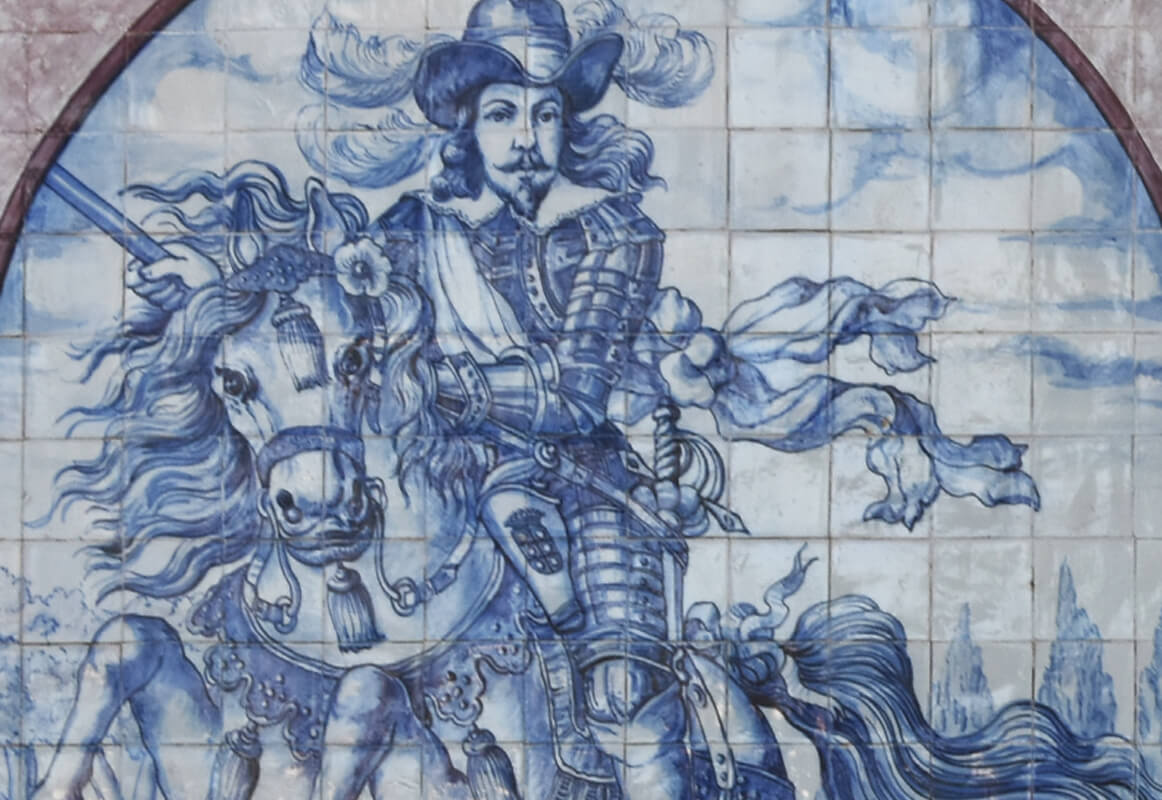
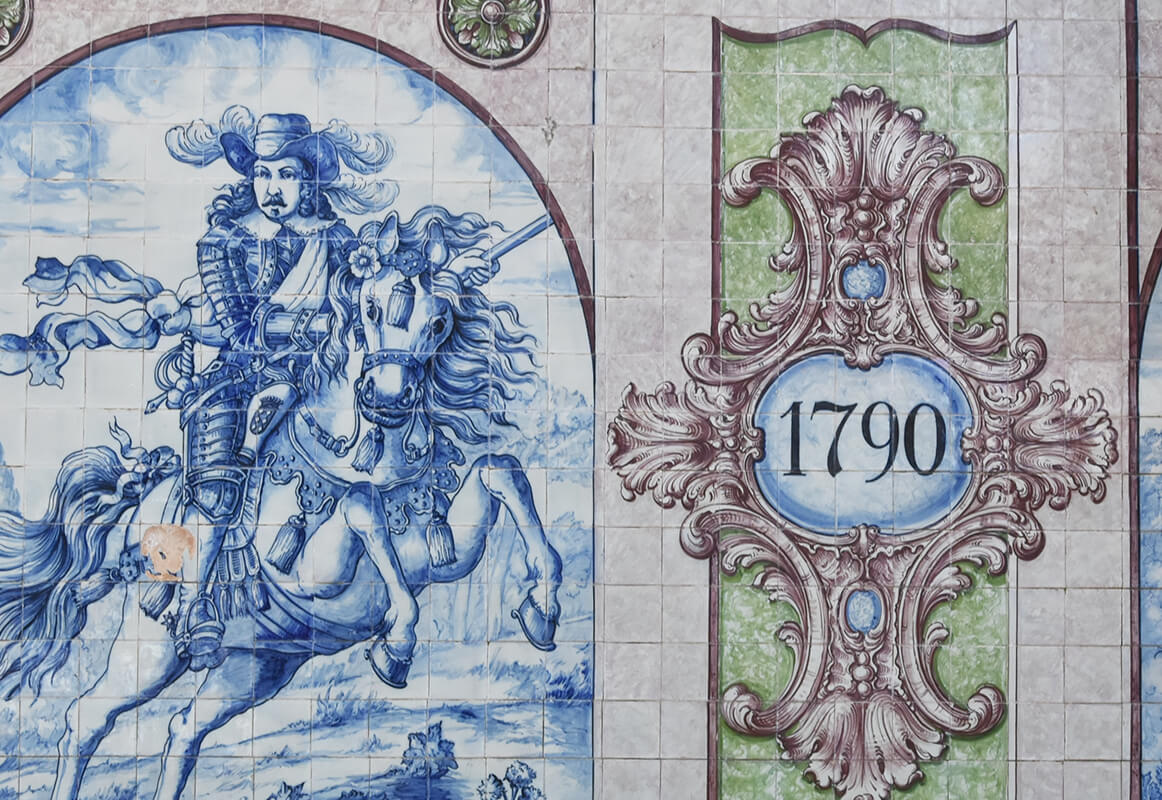
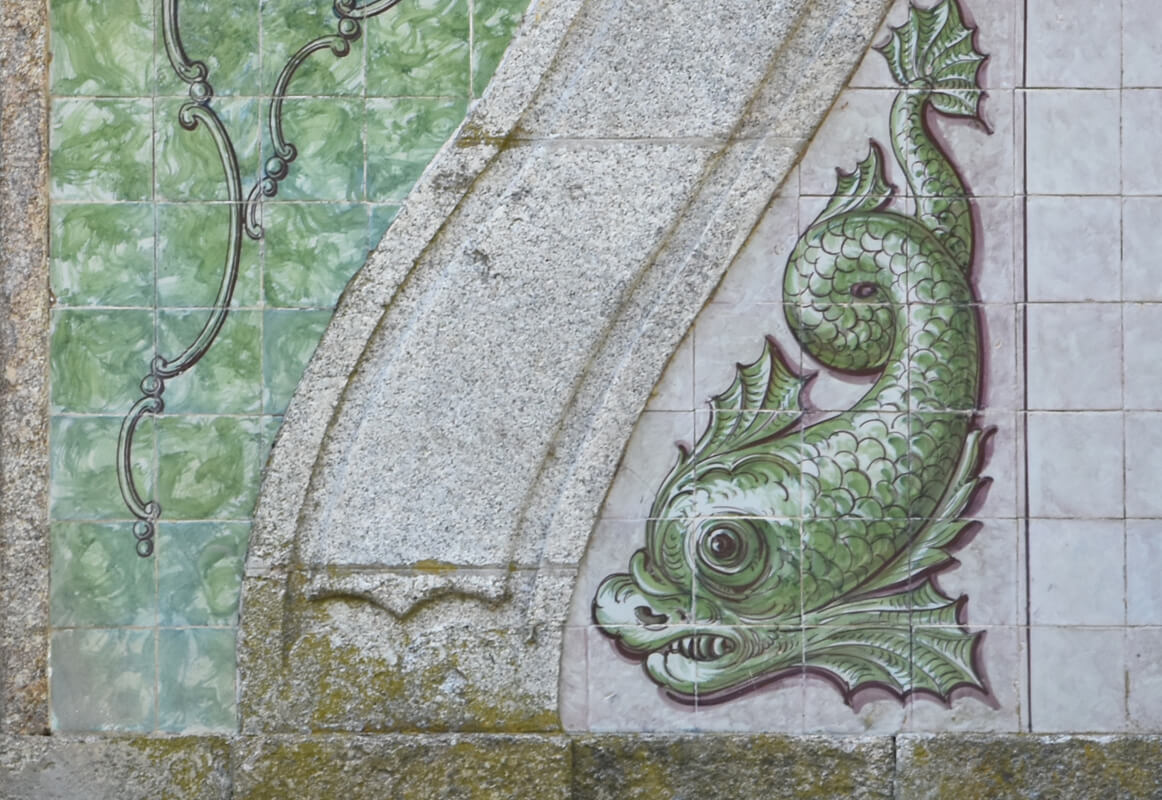
For the celebration of the Third Centennial of the poet Camões, in 1880, he made two allegorical cars. He also took part in the celebration of the Marquess of Pombal’s first centennial.
His pseudonym comes from an illustrious ancestor, Diogo Cão, whose surname he adopted for himself. In the Diccionário Portugal he is described as follows: «Genre painter, decorator, and scenographer. He has cultivated, for over half a century, ornamentation, and flowers, at which he is adept, and also ceramic painting, especially on tiles. With his knowledge and practice in all genres and processes, old and modern, of decorative painting in buildings, be it interior or exterior, such as the fresco, several temperas, oil, watercolour, etc., he could very well be considered, at least, our last painter of frescoes and the greatest of the painter-decorators that the 19th century has presented us with».
Gabriel del Barco
Gabriel del Barco was born in 1648 in the province of Guadalajara, in Siguenza. In 1666 he moved to Madrid. Three years later, after the end of the Restoration Wars, he came to Portugal with the ambassador of Castile. Little is known of his activity as a painter during his first years in Portugal. Documents of the time tell us that, in 1681, he worked on the ceilings of the Church S. Luís dos Franceses. By 1683 he was already a member of the fraternity of S. Lucas, reserved for the most educated.
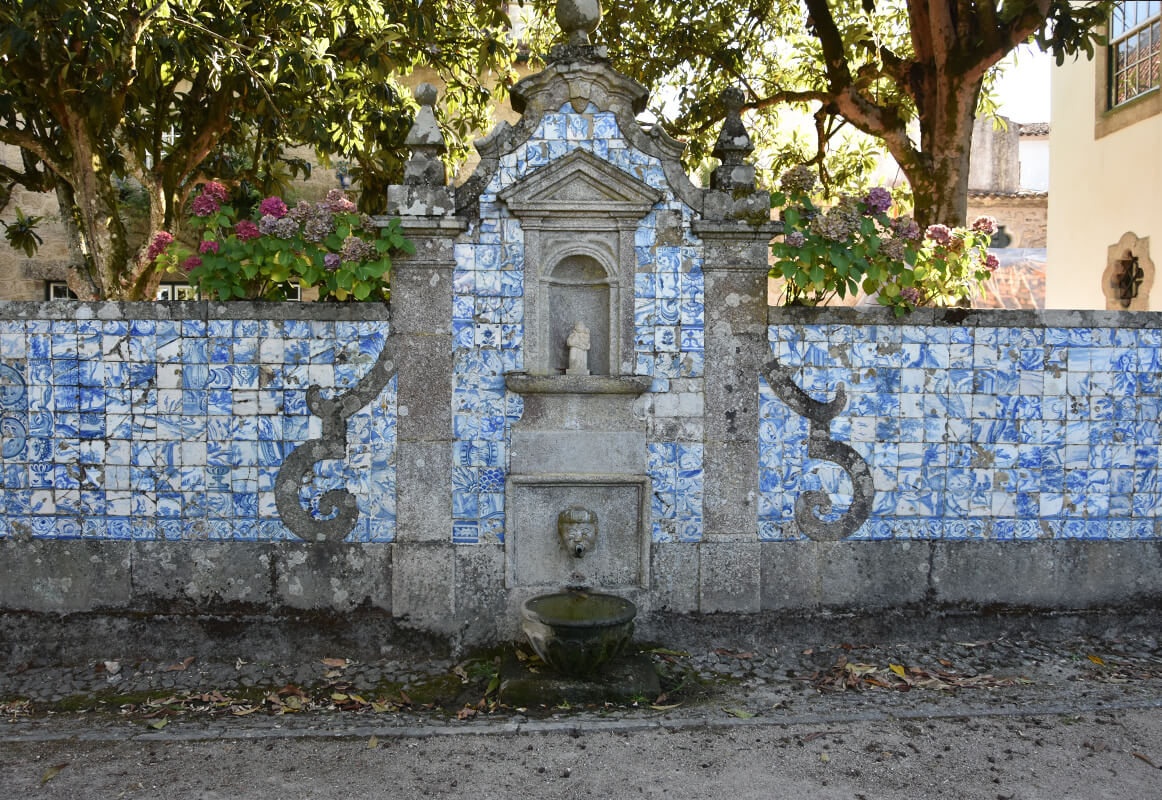
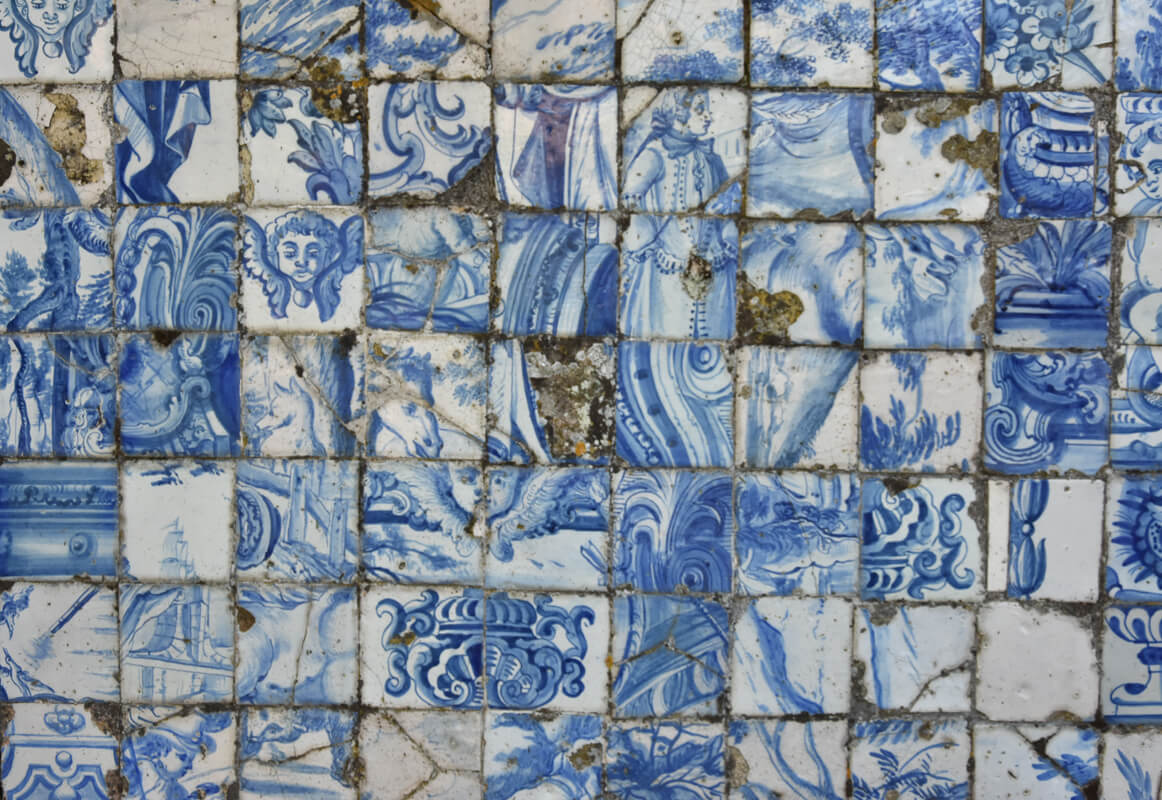
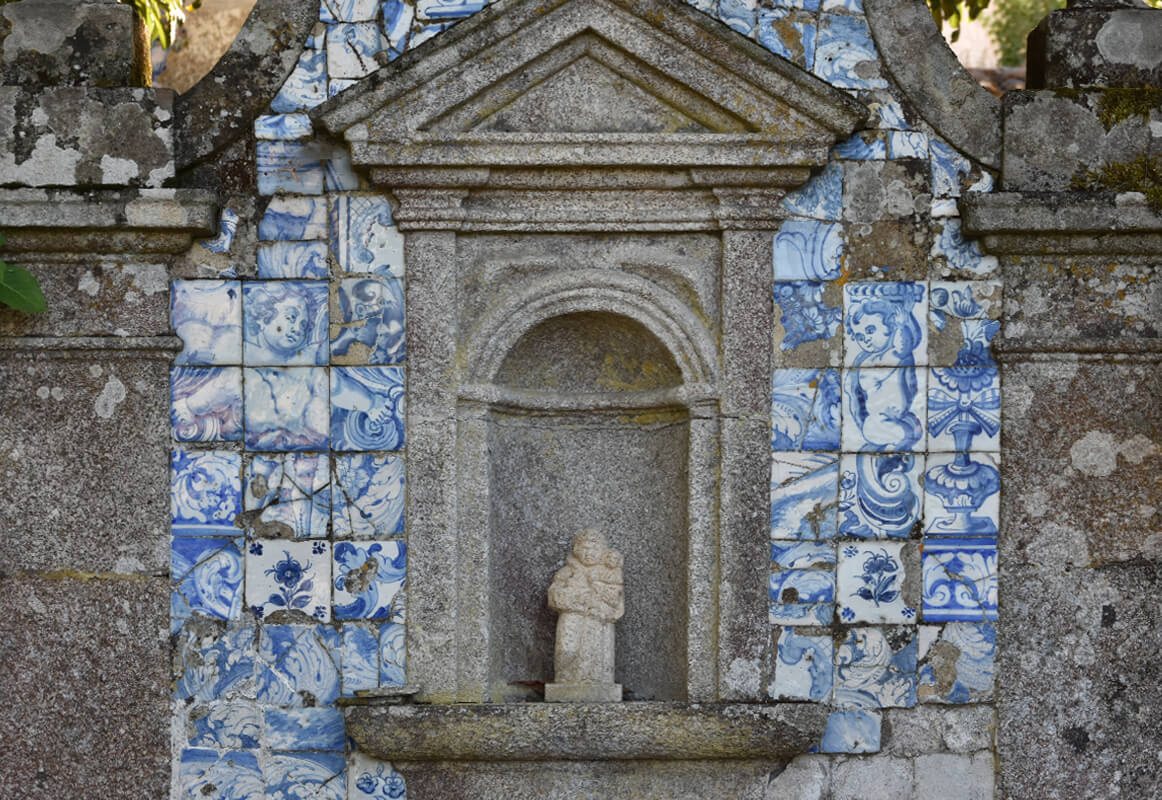
His career as a tile painter may have had a late start, since his oldest known tiles date from 1689; they are in the main chapel of the Alentejan monastery of Nossa Senhora do Espinheiro, in Évora.
The place and date of his death are unknown; he may have died in Spain. The only reference we can trust is the one by Fr. Agostinho de Santa Maria who, in 1707, regretted the much-felt absence of Gabriel del Barco – which suggests that the painter might have died or returned to his native country.
